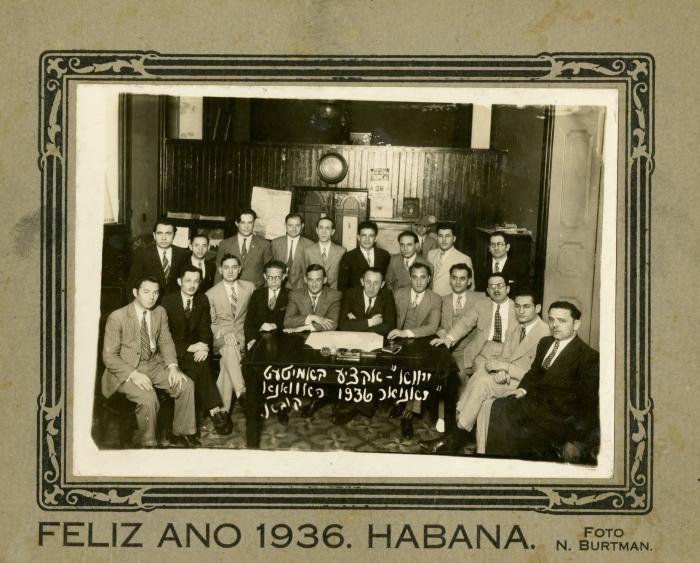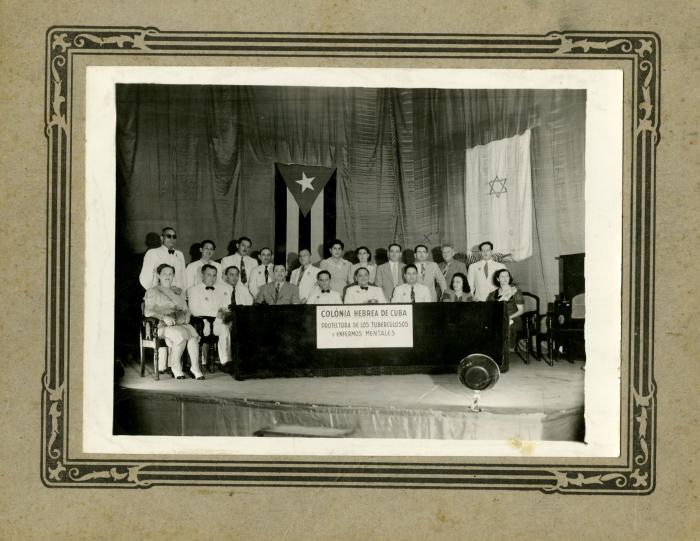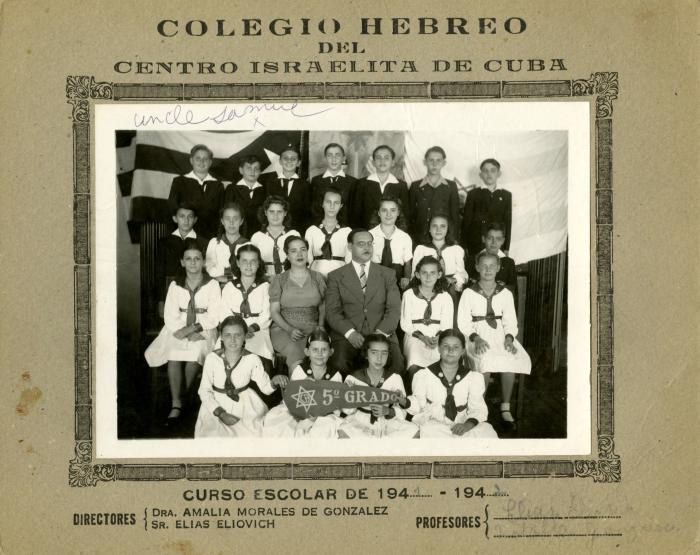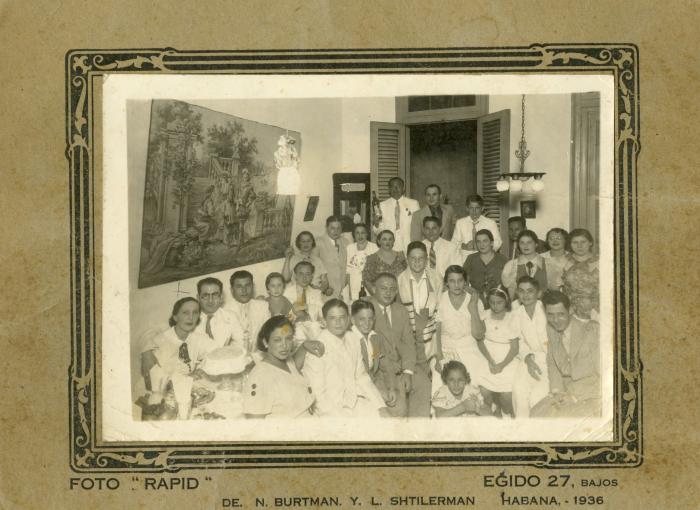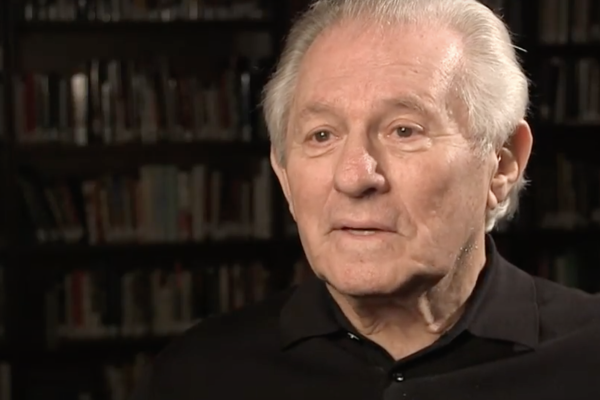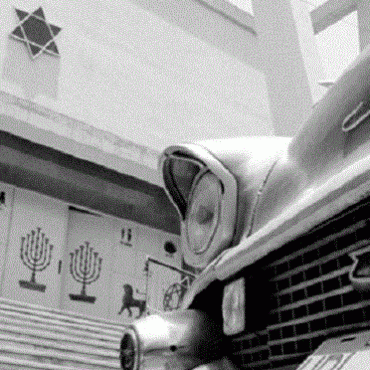Family Snapshots of Yiddish Cuba
A collection of newly re-discovered photographs portray the island’s vibrant Yiddish cultural life of the 1930s and 1940s.
Offering a relative openness toward Jews, Cuba became a haven for Jewish emigrants from Eastern Europe in the first decades of the 20th century. Calling the island “Akhsanie Kuba” (Hotel Cuba), many hoped to settle in the US eventually, but the restrictive Immigration Act of 1924 made that all but impossible.
Because of this, throughout the 1920s and 1930s, Jewish immigrants built a rich cultural world in Cuba. The community supported a newspaper, Havaner lebn (Havana Life), a local amateur Yiddish theater, and Jewish schools with Yiddish-language instruction. Inspired by other modernist movements around the world, a group of young Yiddish artists and writers formed “Yung-kuba” (Young Cuba) in the late 1920s and created the literary monthly, Oyfgang (Rising). The leader of this group, Leyzer (Eliezer) Aronovski, was a prolific writer whose work was not only published on the island but also in New York, Warsaw, and Buenos Aires.
In 1924, the Jewish population of Cuba numbered 42,000, the majority of which were Ashkenazi and lived in Havana. After the Cuban Revolution in 1959, however, almost all remaining Cuban Jews left, with many moving to Florida.
The short-lived Yiddish scene in Havana comes to life in a treasure trove of photographs in our collection. Taken in the '30s and '40s and captioned in Yiddish and Spanish, they portray a lively, multigenerational community. Four recurring faces are labeled with an X: Gesha and Shlomo Pasiencier and their two children, Samuel and Sarah (Sula). Gesha had immigrated to Cuba from Kobryn (now in Belarus) and Shlomo from Lutsk (present-day Ukraine); they married in Cuba in 1926.
Two photographs reveal Shlomo’s leadership role in the community. He is shown as part of the board of the local YIVO Action Committee, which dedicated itself to preserving and promoting Eastern European Jewish culture. He is also present in another picture portraying the Tuberkuloz Komitet (Tuberculosis Committee), a group dedicated to promoting physical and mental health. Representing their commitment to their country and the Jewish community, the group is flanked both by the Cuban flag and the Star of David.
Yiddish Committees
Some photographs in this collection offer a rare glimpse of the world of Yiddish theater in Havana. In one, Gesha Pasiencier, in costume and stage makeup, poses with an ensemble of characters.
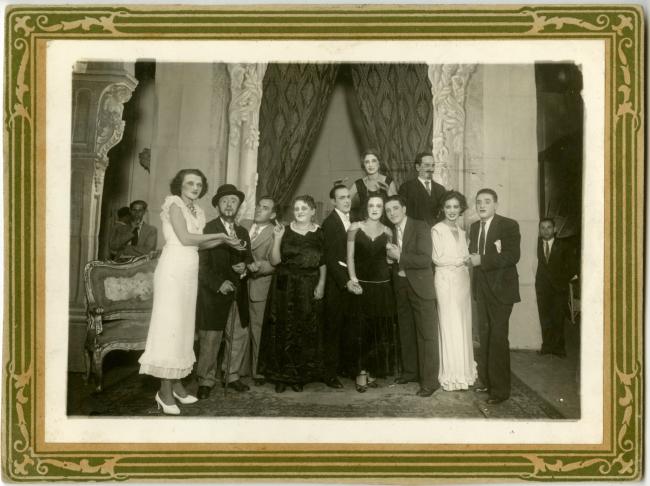
In a celebration of the 7th anniversary of the Tuberculosis Committee in 1935, Samuel and Shlomo are photographed on stage at Havana’s Jewish Center in front of a painted backdrop. The Yiddish caption reads, “board of directors of tuberculosis committee with a group of doctors, friends, and supporters during the celebration of the committee’s seventh anniversary [in]...1935 at the meeting hall of the Jewish Center.”
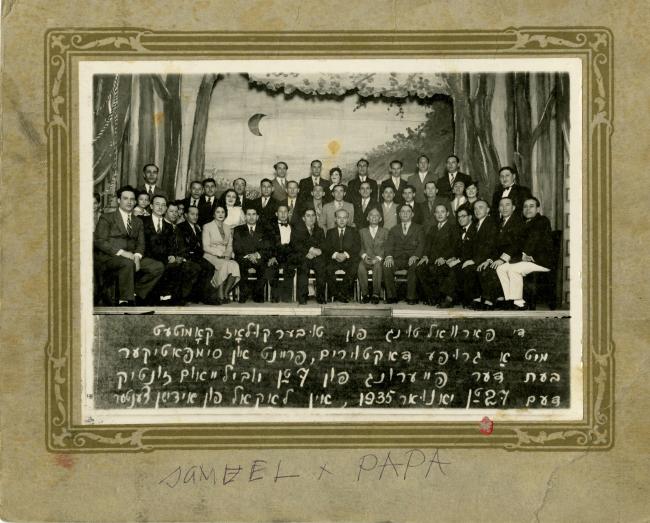
The Pasiciener children and their peers also took an active part in Jewish life. This cache of photographs includes class pictures from the Colegio Hebreo del Centro Israelita de Cuba where Samuel and Sarah studied. Another shows their parents at a bar mitzvah celebration.
Family and Children's Jewish Involvement
While most Jews left after the Cuban Revolution in the 1950s, the Pasiencier family left in 1942. They first went to Florida and then settled in the Northeast where they were naturalized. Before their departure, the community held a banquet in honor of Shlomo.
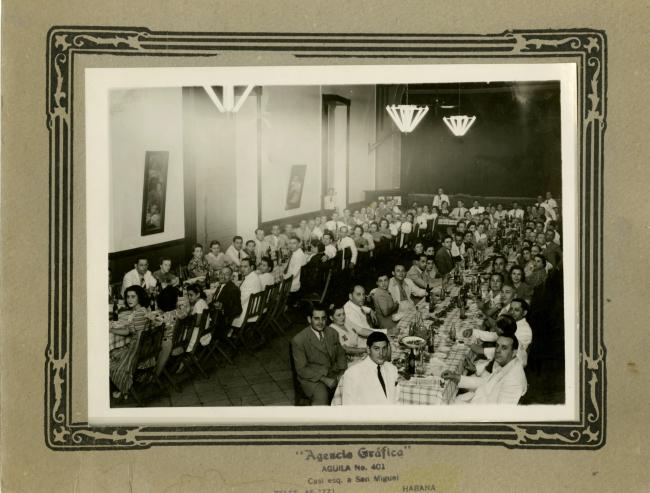
The Pasiencier family photographs join the wealth of books, newspapers, and journals from Havana in the collections of the Yiddish Book Center. They reflect the vitality of Jewish life in Cuba, a dynamic community with a vibrant Yiddish cultural legacy.
—Sarah Biskowitz, July 2022.
Sarah Biskowitz is the Richard S. Herman 2021-2022 fellow in bibliography and exhibitions at the Yiddish Book Center. A native of Milwaukee, WI, she graduated from Smith College in 2021 with a degree in French and Jewish studies.
Additional Reading
A Room Named Ruth by Ruth Behar in Pakn Treger, Fall 2007
Meḳsiḳanish, Urugṿayish, Ḳubanish anṭologye by Shemuel Rozshanski, 1982
Yiddish in Cuba: A Love Story by Rosa Perelmuter in Hispanófila, December 2009

